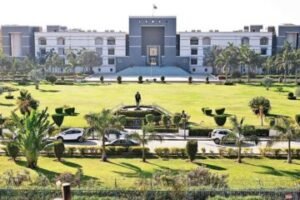States Have No Power To ‘Identify’ Socially & Educationally Backward Classes After 102nd Constitution Amendment: Supreme Court Holds By 3:2 Majority
Case: Dr Jaishree Laxmanrao Patil v Chief Minister
Coram: Justices Ashok Bhushan, L Nageswarar Rao, S Abdul Nazeer, Hemant Gupta and S Ravindra Bhat
Case No: [CA 3123 of 2020]
Court Observation: “Parliament, through the 102ndAmendment clearly intended that the existing legal regime for identification of communities as SCs and STs and for their inclusion in the list of SCs and STs under Articles 341 and 342, which had hitherto existed, ought to be replicated in relation to identification of SEBCs”
The majority judgment interprets
By introduction of Articles 366 (26C) and 342A through the 102nd Constitution of India, the President alone, to the exclusion of all other authorities, is empowered to identify SEBCs and include them in a list to be published under Article 342A (1), which shall be deemed to include SEBCs in relation to each state and union territory for the purposes of the Constitution.
The states can, through their existing mechanisms, or even statutory commissions, only make suggestions to the President or the Commission under Article 338B, for inclusion, exclusion or modification of castes or communities, in the list to be published under Article 342A (1).
The reference to the Central List in Article 342A (2) is the one notified by the President under Article 342A (1). It is to be the only list for all purposes of the Constitution, in relation to each state and in relation to every union territory.
The use of the term “the Central List” is only to refer to the list prepared and published under Article 342A (1), and no other; it does not imply that the states have any manner of power to publish their list of SEBCs. Once published, under Article 342A (1), the list can only be amended through a law enacted by Parliament, by virtue of Article 342A (2). (iv) In the task of identification of SEBCs, the President shall be guided by the Commission set up under Article 338B; its advice shall also be sought by the state in regard to policies that might be framed by it.
If the commission prepares a report concerning matters of identification, such a report has to be shared with the state government, which is bound to deal with it, in accordance with provisions of Article 338B. However, the final determination culminates in the exercise undertaken by the President (i.e. the Central Government, under Article 342A (1), by reason of Article 367 read with Section 3 (8) (b) General Clauses Act).
The states’ power to make reservations, in favour of particular communities or castes, the quantum of reservations, the nature of benefits and the kind of reservations, and all other matters falling within the ambit of Articles 15 and 16 – except with respect to identification of SEBCs, remains undisturbed.
The Commission set up under Article 338B shall conclude its task expeditiously, and make its recommendations after considering which, the President shall expeditiously publish the notification containing the list of SEBCs in relation to states and union territories, for the purpose of the Constitution.
Till the publication of the notification mentioned in direction (vi), the existing lists operating in all states and union territories, and for the purposes 132 of the Central Government and central institutions, continue to operate. This direction is issued under Article 142 of the Constitution of India.
Justice Ashok Bhushan and S. Abdul Nazeer (minority) however opined that
We are of the view that word ‘Central’ in Article 342A (2) was used for purpose and object. The use of ‘Central’ was only with the intent to limit the list issued by the President to Central services. It is well settled rule of interpretation that no word in a statute or Constitution is used without any purpose. Word ‘Central’ has to be given meaning and purpose.
When we have interpreted Article 342A to mean that Article 342A refers to ‘Central List’ which is prepared for services under the Government of India and organisations under the Government of India, the definition given under Article 366(26C) which specifically refer to Article 342A has to be read together and list of backward classes which is not Central List shall not be governed by the definition under Article 366(26C). Since, the (26C) has been inserted in the context of Article 342A, if the context is list prepared by the State and it is State List, definition under (26C) shall not govern.
We, thus, hold that Article 342A was brought by Constitution 102nd Amendment to give constitutional status to National Backward Classes Commission and for publication of list by the President of socially and educationally backward classes which was to be Central List for governing employment under Government of India and the organisations under it.
Justice Rao, wrote a separate judgment, agreeing with Justice Bhat’s interpretation of 102nd Judgment. “There is only one list that can be issued by the President specifying the socially and educationally backward classes and only those classes are treated as socially and educationally backward classes for the purposes of the Constitution.. Only those backward classes included in the public notification under Article 342 A shall be socially and educationally backward classes for the purposes of the Constitution.”
[doc id=5018]
Previous Posts
Authorities Under Disaster Management Act Have No Power To Alter Fee Structure Of Private Schools
No COVID Patient Should Be Denied Hospital Admission For Lack Of Local Address Proof
Prohibition Of Child Marriage Law Does Not Differentiate On Basis Of Religion Download Judgement




